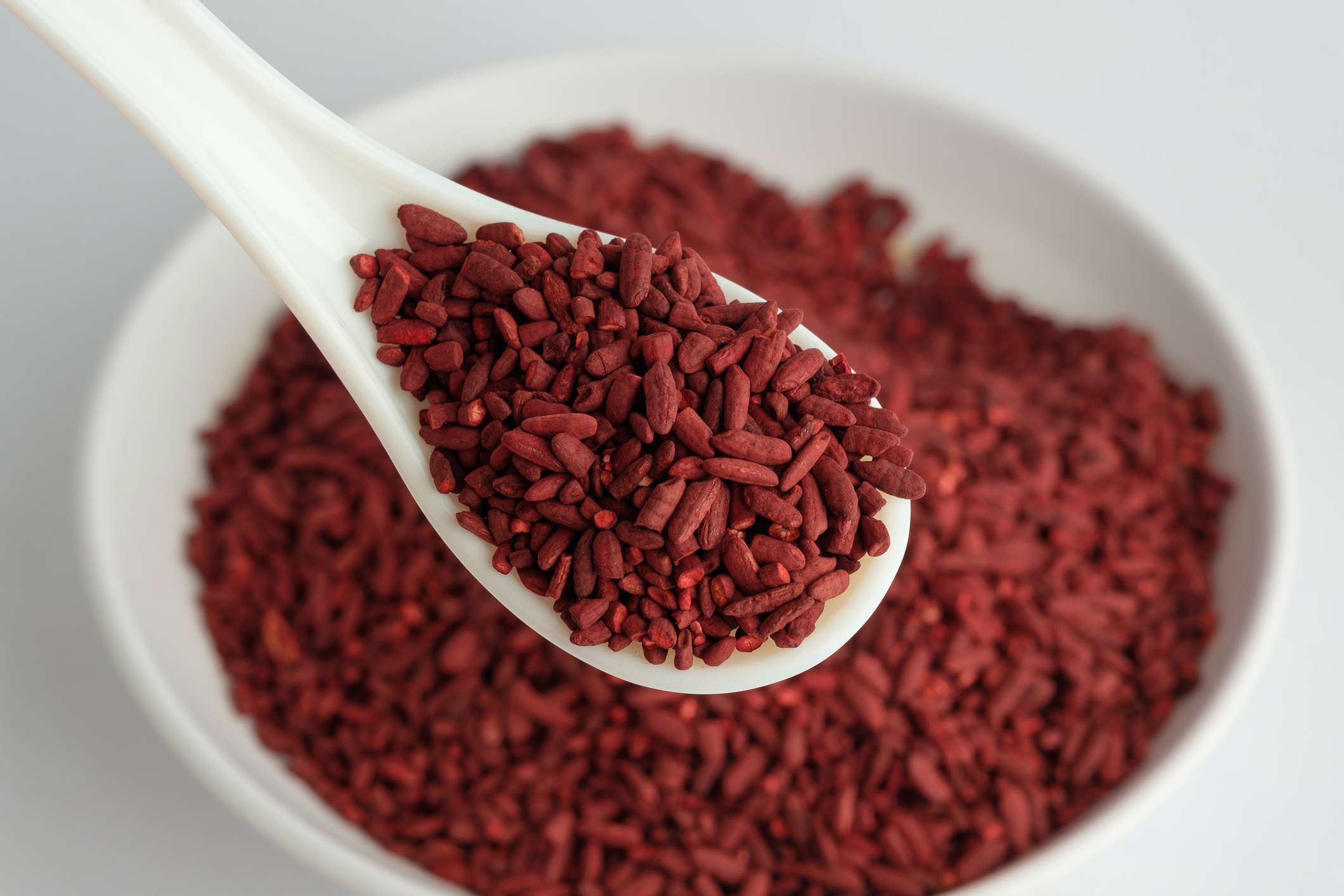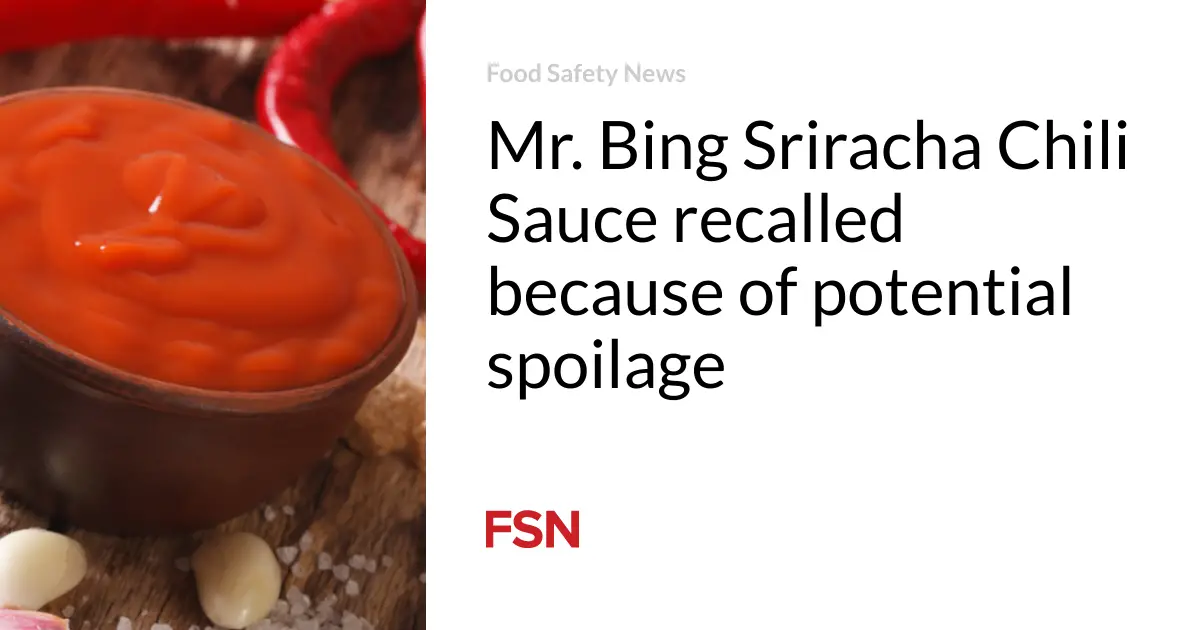
[ad_1]
:max_bytes(150000):strip_icc():format(jpeg)/Health-GettyImages-RedYeastRice-d51daa10e7994e80b36bdd20cfe19c5c.jpg)
Red yeast rice is a supplement made through the fermentation of mold on white rice that’s primarily used to lower heart disease risk factors.
Studies show that red yeast rice may support health in several ways, including reducing cholesterol, blood sugar, and blood pressure.
Red yeast rice is made by fermenting fungus, usually a mold called Monascus purpureus (M. purpureus), with white rice. Though M. purpureus is a mold, not a yeast, most supplements sold in the United States use the name “red yeast rice.”
This fermentation process produces compounds called monacolins, which are the main active ingredients in red yeast rice. Monacolin K is a monacolin that works similarly to statin medications like lovastatin, which are used to treat high cholesterol. It inhibits cholesterol production in the liver, which reduces blood cholesterol levels.
Red yeast rice is best known for its cholesterol-lowering properties but has also been linked to other health benefits. Most of the research on the health benefits of red yeast rice has been conducted on products that contain high levels of monacolin K.
These products are available for purchase as dietary supplements in other countries. However, in the U.S., products that contain more than trace amounts of monacolin K are considered unapproved new drugs and cannot legally be sold as dietary supplements.
Because of this, the following potential health benefits can’t be applied to red yeast rice supplements sold in the U.S.
Reduces Blood Lipid Levels
Red yeast rice supplements that contain high levels of monacolin K have powerful cholesterol-lowering properties and are commonly recommended to people with high cholesterol who aren’t able to take statin medications, such as those who are intolerant to statins. People who are intolerant to statin medications are unable to take statins due to experiencing certain side effects.
Statins often cause side effects, such as muscle pains, weakness, and cramps, which are collectively referred to as myalgias. Statins may also negatively affect liver function in some people.
Statin intolerance is common, impacting up to 10% of those who are prescribed statins. Females, older adults, people with kidney disease, and those with a history of muscle-related symptoms are more likely to be intolerant to statins.
When taken for at least four weeks, red yeast rice supplements have been shown to reduce low-density lipoprotein (LDL) cholesterol levels by 15–34% compared to placebo treatments in people with mild to moderate high cholesterol levels.
Red yeast rice may also reduce other blood lipids, such as triglycerides. A review of 15 studies found that red yeast rice supplements in doses ranging from 200-4800 milligrams (mg) per day significantly lowered triglycerides, total cholesterol, and LDL cholesterol in people with elevated blood lipids. The review found that red yeast rice supplements more effectively lowered triglyceride levels than statin medications.
These findings are related to products that contain more than trace amounts of monacolin K, which are prohibited from being sold as dietary supplements in the U.S.
May Improve Blood Pressure
Though research is limited, some studies suggest that red yeast rice supplements containing monacolin K may effectively reduce blood pressure.
Red yeast rice contains gamma-aminobutyric acid (GABA), a neurotransmitter that regulates blood pressure by inhibiting vasopressin, a hormone that increases blood pressure levels.
A small study of 18 people with high LDL cholesterol found that treatment with 200 mg of red yeast rice containing 2 mg of monacolin K for eight weeks significantly decreased blood pressure, LDL cholesterol, and total cholesterol compared to a control group.
However, other studies haven’t found red yeast rice effective in reducing blood pressure levels. Because research findings are mixed, more studies are needed to fully understand red yeast rice’s potential blood pressure-lowering benefits.
Has Blood Sugar-Lowering Effects
Red yeast rice supplements may benefit people with hyperglycemia (high blood sugar). Studies show that it may reduce high blood sugar levels by stimulating receptors in pancreatic cells called muscarinic M3 receptors, which play a key role in maintaining blood sugar levels. Red yeast rice may also support better blood sugar management by improving how the body uses insulin, a hormone that shuttles blood sugar into your cells for energy.
A review of 30 studies found that red yeast rice supplements decreased fasting blood sugar and the long-term blood sugar control marker hemoglobin A1c (HbA1c). The review also found that red yeast rice supplements reduced insulin resistance, a condition where your cells become resistant to insulin, leading to high blood sugar levels.
Some research suggests that red yeast rice may help protect against diabetes. A review of data on 34,504 people found that, compared to people who were prescribed the statin medication lovastatin, people who were prescribed red yeast rice were less likely to develop diabetes. However, this was related to prescription red yeast rice products, which are different from the red yeast rice supplements for sale in the U.S.
Nevertheless, taking red yeast rice may support healthy blood sugar regulation.
Red yeast rice is available in several forms, including powders and capsules. It’s commonly taken in divided doses, such as twice daily, but it can also be taken in a single dose.
If you’re interested in taking red yeast rice, you should speak with your healthcare provider to ensure you’re using it appropriately and safely.
Dosage
The dosage of red yeast rice varies, but the most common dose used in studies is 600 mg twice daily. However, higher and lower doses have also been used in research.
It’s important to note that the content of monacolin K, the active compound in red yeast rice, in red yeast rice supplements varies widely. Studies of monacolin K may be effective for improving certain aspects of health, like cholesterol levels, when taken in doses of 3-10 mg daily.
Most supplements don’t disclose the amount of monacolin K they contain. In fact, a review that analyzed 28 red yeast rice products found that none of the included products disclosed the amount of monacolin K on the label. The study found that two of the products didn’t contain any monacolin K, while the others contained varying doses of monacolin K. Some contained very high doses, and others contained very low doses.
It’s also illegal to sell red yeast rice products containing more than trace amounts of monacolin K in the U.S. It’s currently unclear if taking supplements containing trace amounts of monacolin K provides any health benefits, including cholesterol-lowering benefits.
When used appropriately, red yeast rice is considered safe. A review concluded that red yeast rice products that provide around 3 mg of monacolin K per day were well tolerated and had similar side effects as low-dose statin medications.
Other studies have found that doses of between 3-10 mg of monacolin K taken for 4-24 weeks were safe and not associated with serious side effects.
That said, red yeast rice supplements have been linked to a few safety concerns. Red yeast rice supplements can contain a toxic contaminant called citrinin, which can harm your kidneys and liver. If you’re interested in taking a red yeast rice supplement, it’s important to choose a product that’s tested for contaminants and is certified citrinin-free.
Although rare, some people may experience serious side effects, such as muscle breakdown and acute liver inflammation, when taking red yeast rice containing low amounts of monacolin K, as low as 3 mg per day.
Potential Drug Interactions
Red yeast rice may interact with commonly prescribed medications, such as:
- Statin medications: Red yeast rice supplements contain monacolin K, which has the same chemical makeup as the statin medication lovastatin. Studies show that red yeast rice supplements have similar side effects as statin medication. Taking red yeast rice alongside statin medications may increase the risk of these side effects, including muscle aches.
- CYP450 3A4 and P-glycoprotein substrates: Some research suggests that red yeast rice may interfere with drugs metabolized by CYP3A4 and P-glycoprotein enzymes, such as high blood pressure medications, antibiotics, and pain medications.
Because red yeast rice supplements could interfere with several commonly prescribed drugs, it’s recommended to consult with your healthcare provider before taking red yeast rice, especially if you’re taking one or more medications.
Can You Take Too Much Red Yeast Rice?
Studies suggest that doses of red yeast rice with 3-10 mg of monacolin K taken for 4-24 weeks are safe and not associated with serious side effects.
Though varying doses of red yeast rice have been shown to be relatively safe, there have been reports of adverse side effects, such as muscle breakdown and liver inflammation, associated with products providing 3 mg of monacolin K daily.
Contact your healthcare provider if you have questions about safe dosing for red yeast rice products.
Red yeast rice supplements may cause several side effects, including:
Though rare, red yeast rice supplements have been linked to more serious side effects, such as allergic reactions and muscle, liver, and kidney damage.
Because red yeast rice can cause side effects and may be unsafe for certain people, it’s important to talk to your healthcare provider before adding it to your supplement regimen.
Red yeast rice is a dietary supplement made by fermenting a mold called M. purpureus with white rice. It is high in compounds called monacolins, which function similarly to statin medications.
Studies show that red yeast rice supplements may effectively reduce cholesterol and triglyceride levels and have blood sugar and blood pressure-lowering properties.
However, red yeast rice products contain variable amounts of monacolins and may be unsafe for some people. If you’re interested in taking a red yeast rice product, it’s best to consult with your healthcare provider to ensure it’s a safe and appropriate choice for your health needs.
[ad_2]
Source link






